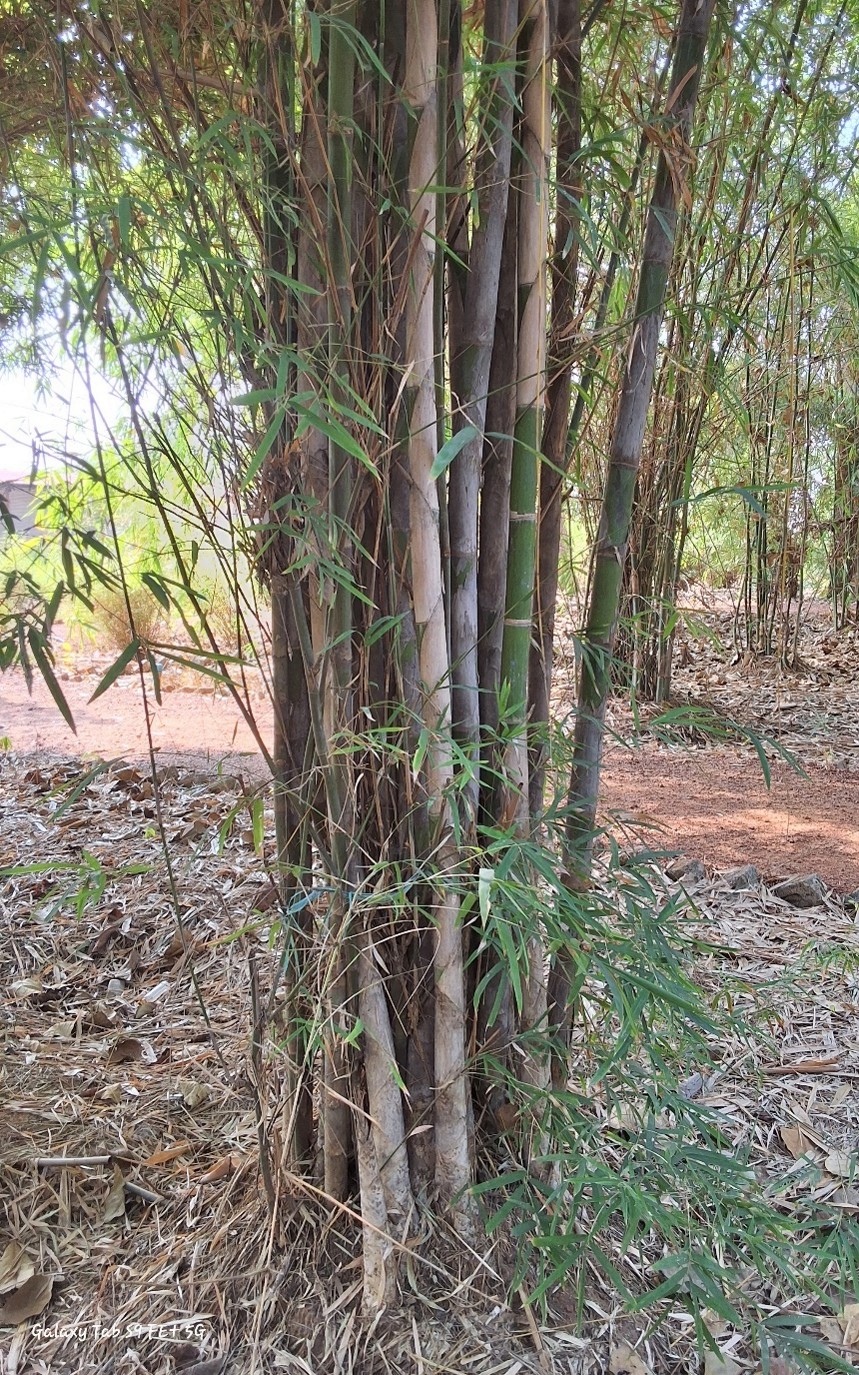Thyrostachys olivery

Thyrostachys olivery
Thyrostachys olivery belongs to the family Poaceae, the grass family. This species is native to Southeast Asia and is primarily found in regions with tropical and subtropical climates.It is known as Kanak Kai in Tripura, Keirkwa in Manipur & Thoti mula, Lathi mula in Kerala state lacally. It thrives in moist forested areas and is well-suited to grow along riverbanks and in areas with high rainfall.
This clumping bamboo species typically grows to a height of 8 to 20 meters, with culm diameters ranging from 5 to 10 centimeters. The culms are green when young, maturing to a pale yellow or light brown shade over time. Internodes are smooth and measure approximately 20 to 40 centimeters in length. The culm sheaths are initially green and glabrous, later turning to a straw-colored hue as they age. The leaves are lanceolate, ranging from 15 to 25 centimeters in length and 2 to 4 centimeters in breadth, with pointed tips and a smooth texture.
Ecologically, Thyrostachys olivery plays a crucial role in stabilizing soil and preventing erosion, particularly in hilly terrains and riverbank areas. Its robust root system binds the soil effectively, while the dense foliage provides ground cover, enhancing soil moisture retention. It is drought-tolerant to a certain extent but thrives best in areas with annual rainfall between 1200 and 2500 millimeters. It grows well in a variety of soil types, including loamy and sandy soils, provided they are well-drained and have a pH range of 5.5 to 7.5.
The uses of Thyrostachys olivery are diverse and deeply embedded in local economies. Its strong and flexible culms are widely used in construction for scaffolding, poles, and fencing. The species is also valued for its utility in crafting furniture, baskets, and other handicrafts. Additionally, the shoots of this bamboo are edible and are often harvested for culinary purposes in its native regions.
The flowering cycle of Thyrostachys olivery is gregarious, occurring at long intervals, typically once every 30 to 50 years. Flowering is followed by seed production, after which the parent clump usually dies. This species is commonly propagated through vegetative means, such as culm cuttings and rhizome divisions, though tissue culture methods are also employed for large-scale propagation.
This bamboo species is not only a vital resource for construction and crafts but also contributes significantly to ecological sustainability and soil conservation, making it a valuable asset in tropical and subtropical regions.
Listen Audio:
Need assistance? BRTC Faculty